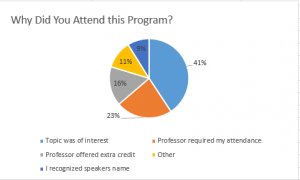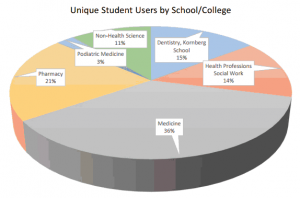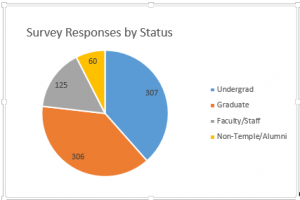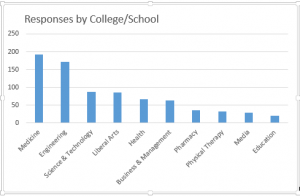Last week’s final Assessment in the Real World workshop began with a report of book circulation – ¼ million data points detailing the circulation of books published in English and purchased from 2003 to 2013. Fred Rowland (RIS librarian for classics, religion and philosophy) has been working with this data for some time. The workshop drew the largest crowd yet for the series (18 of us crowded into Room 309) with representation from Cataloging, Acquisitions, Access Services, HSL, SEL, SCRC, and RIS – we had a lively discussion on data, collection use and decision-making.
Fred’s initial interest was to learn about patterns of use in the collection. He wanted to know if the books we purchase, through Approval or Firm orders, getting checked out? He assumed that use would be a reasonable measure for success in his collection development decisions.
Working with Brian Schooler, Carla Cunningham and Angela Cirucci to develop the query, extract the report and clean up the data, Fred was able to get some answers to his questions. He calculated that for books purchased during the ten years between 2003 – 2013, over 55% had circulated at least once by the summer of 2014. Indeed, for books purchased during the 2003 – 2004 academic year, over 78% had circulated by the summer of 2014. He was able to determine that books have a use “life cycle” that varies by discipline. While most books peak in use during the first five years of purchase, art books have a use that is more sustained over time. This makes sense, given the nature of browsing in that discipline.
But as is often the case, the analysis led to more questions! While this data were interesting, we also discussed its limitations for really understanding patterns of collection use. For instance,
- Is circulation even a good metric for determining the value of a research library’s collection?
- How does use of e-books effect the circulation of print and does this effect vary by subject area?
- Are there differences in use by patron type and by discipline?
- Is there a relationship between use of interlibrary loan services and local collection use?
- How does the availability of electronic book records in the catalog factor into how our print collection is used?
- And the big question: How can we best spend our limited collection funds effectively, balancing electronic and print in ways that make sense?
We recognized that there are limitations in getting data from this one source and analyzing patterns in a vacuum. Interlibrary loan (Illiad) and PALCI use statistics should to be taken into account, as well as e-books use statistics and use of reserves (Blackboard systems). That’s four additional sets of numbers and a much more complex picture.
It’s clear that simple cost per use analysis is not sufficient for making decisions about collections. Here are Temple, librarians are using a variety of methods to inform themselves about collection use, from tracking on faculty research needs and aligning purchases with the curriculum to keeping an eye on sorting shelves for use trends.
The discussion proved a very useful opportunity for sharing information about what data was available, its limitations, and strategies library staff are using to make informed decisions as they purchase and retain information resources.





